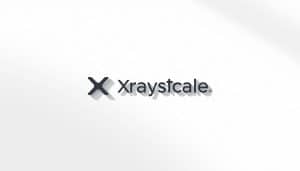Are you tired of being limited to a single blockchain? Wish you could effortlessly move your assets across different networks? Look no further than crypto bridges – the revolutionary solution that lets you seamlessly connect and swap cryptocurrencies across blockchains. These bridges serve as a passage, enabling you to transfer your digital assets from one blockchain to another with ease. Discover the benefits, risks, and types of bridges in this article, and unlock endless possibilities with crypto bridges.
The Importance of Crypto Bridges
You should frequently utilize crypto bridges due to their vital role in seamlessly connecting and swapping across blockchains. Crypto bridges serve as essential infrastructure that enables the movement of assets from one blockchain to another. They play a crucial role in bridging the gap between different networks, allowing users to access and interact with assets that are not native to their primary blockchain. By utilizing crypto bridges, you gain the ability to use cryptocurrencies on other blockchains, expanding your options for investment and participation in various decentralized applications. Additionally, bridging can often be a more cost-effective solution compared to selling your crypto and then buying it back on a different blockchain. However, it is important to be aware of the risks involved, such as potential hacking threats and coding bugs that can lead to losses. It is crucial to conduct thorough research and choose reliable and secure bridges to ensure a smooth and secure experience.
Advantages of Seamless Blockchain Connections
By seamlessly connecting and swapping across blockchains, you can unlock numerous advantages in the world of cryptocurrencies. With seamless blockchain connections, you can:
-
Access a wider range of cryptocurrencies: Seamlessly connecting and swapping across blockchains allows you to access a broader range of cryptocurrencies beyond what is available on a single blockchain. This opens up more investment opportunities and diversifies your portfolio.
-
Take advantage of different blockchain features: Each blockchain has its own unique features and capabilities. By seamlessly connecting and swapping across blockchains, you can leverage the strengths of different blockchains and utilize specific features that best suit your needs.
-
Reduce transaction costs and time: Seamless blockchain connections enable you to bypass traditional intermediaries and directly interact with different blockchains. This eliminates the need for multiple transactions and reduces transaction costs and time, making the process more efficient and cost-effective.
Exploring the Best Crypto Bridges
Now let’s delve into the top crypto bridges that revolutionize seamless blockchain connections. When it comes to the best crypto bridges, several options stand out. First, the Arbritrum Bridge is ideal for moving ETH to Arbitrum with lower fees. If you want to move ETH to Polygon quickly and affordably, the Polygon Bridge is your best bet. For Solana and NFT transfers, the Portal Token Bridge supports 22 blockchains, making it the top choice. If you’re looking for fast transfers with slippage-free and lower cost bridging, the Across bridge is highly recommended. Other notable bridges include the Avalanche Bridge, Binance Bridge, and Harmony Bridge. These bridges offer various benefits, such as using cryptocurrency on other blockchains and being more cost-effective than selling crypto. However, it’s important to be aware of the risks associated with bridges, such as the potential for hacking and coding bugs. Additionally, there are two types of bridges to consider: trust-based bridges, which are run by individuals or organizations and require depositing crypto assets, and trustless bridges, which utilize smart contracts and keep your crypto in your wallet until the contract executes.
Arbritrum Bridge: Lower Fees, Faster Transactions
The Arbritrum Bridge offers lower fees and faster transactions for seamless blockchain connectivity and swapping. With this bridge, you can experience the following benefits:
- Reduced Fees: The Arbritrum Bridge minimizes transaction costs, allowing you to save on fees when moving assets between blockchains.
- Faster Transactions: Say goodbye to long waiting times. The Arbritrum Bridge enables swift transactions, ensuring you can seamlessly connect and swap across different blockchains without delays.
- Enhanced Connectivity: Seamlessly connect various blockchains using the Arbritrum Bridge. Enjoy the flexibility of moving assets across different networks, expanding your possibilities within the crypto ecosystem.
Polygon Bridge: Fast and Affordable ETH Transfers
Experience fast and affordable ETH transfers with the Polygon Bridge. Polygon is a Layer 2 scaling solution for Ethereum that aims to improve scalability and reduce transaction fees. The Polygon Bridge allows users to seamlessly transfer their ETH from the Ethereum network to Polygon and vice versa. With the Polygon Bridge, you can take advantage of Polygon’s high-speed and low-cost transactions while still being able to access the Ethereum ecosystem.
To give you an idea of the benefits of using the Polygon Bridge, here is a table showcasing the key features:
| Feature | Description |
|---|---|
| Speed | Fast transaction confirmation times, allowing for quick transfers between Ethereum and Polygon. |
| Affordability | Low transaction fees, making it cost-effective to move your ETH between the two networks. |
| Interoperability | Seamless integration with the Ethereum ecosystem, enabling access to various decentralized applications. |
With the Polygon Bridge, you can enjoy the advantages of both Ethereum and Polygon, making it an ideal solution for those seeking fast and affordable ETH transfers.
Portal Token Bridge: Supporting Solana and NFTs
With the Portal Token Bridge, you can seamlessly transfer and swap Solana and NFTs across blockchains. This bridge supports a wide range of blockchains, providing you with greater flexibility and accessibility in managing your assets. Here are three key features of the Portal Token Bridge:
-
Interoperability: The Portal Token Bridge enables you to bridge Solana tokens and NFTs to other supported blockchains, allowing for cross-chain compatibility. This means you can leverage the unique features and opportunities offered by different blockchain ecosystems.
-
Efficiency: The bridge ensures efficient and fast transfers, minimizing transaction times and reducing costs. This allows you to quickly move your Solana assets and NFTs to other blockchains, expanding your reach and increasing liquidity.
-
Security: The Portal Token Bridge prioritizes the security of your assets. It employs robust encryption and smart contract technology to safeguard your tokens and NFTs throughout the bridging process, providing you with peace of mind.
The Portal Token Bridge revolutionizes the way you interact with Solana and NFTs, enabling seamless transfers and facilitating greater connectivity across blockchains.
Across Bridge: Slippage-Free and Cost-Effective Transfers
Start seamless and cost-effective transfers across blockchains with the Across Bridge. This bridge offers slippage-free and lower-cost transfers, making it an ideal choice for fast and efficient bridging. By utilizing the Across Bridge, you can easily move your assets between different blockchains without experiencing any slippage in the process. This ensures that you retain the full value of your assets during the transfer. Additionally, the Across Bridge aims to reduce the cost of bridging, allowing you to save on transaction fees. With its cost-effective approach, this bridge enables you to make the most out of your transfers across blockchains. Take a look at the table below for a quick comparison of some of the best crypto bridges available.
| Crypto Bridge | Benefits |
|---|---|
| Across Bridge | Slippage-free transfers Lower cost bridging |
| Arbritrum Bridge | Lower fees for ETH to Arbitrum transfers |
| Polygon Bridge | Fast and affordable ETH to Polygon transfers |
| Portal Token Bridge | Supports Solana and NFT transfers Supports 22 blockchains |
| Avalanche Bridge | Additional options for bridging across blockchains |
Other Notable Bridges in the Crypto Space
Discover several other notable crypto bridges that provide seamless connectivity and swapping capabilities across various blockchains. These bridges expand the possibilities of the crypto space, allowing users to transact and transfer assets across different networks. Here are three noteworthy bridges in the crypto space:
- Avalanche Bridge: This bridge enables users to move assets between Avalanche and other blockchains, providing interoperability and liquidity options.
- Binance Bridge: With Binance Bridge, users can seamlessly transfer assets between Binance Smart Chain and other supported blockchains, facilitating cross-chain transactions.
- Harmony Bridge: The Harmony Bridge allows for the seamless transfer of assets between Harmony and Ethereum, providing users with more flexibility and options for utilizing their assets.
These bridges, along with others like Arbritrum Bridge, Polygon Bridge, and the Portal Token Bridge, are revolutionizing the crypto space by bridging the gaps between different blockchains, making it easier and more efficient for users to navigate the decentralized ecosystem.
Evaluating the Benefits of Crypto Bridging
Now let’s delve into the benefits of crypto bridging and how it can enhance your experience in the decentralized ecosystem. Crypto bridging offers several advantages that make it a valuable tool for users. Firstly, it allows you to use your cryptocurrency on other blockchains, expanding your options and enabling cross-chain interactions. Additionally, bridging is often a more cost-effective alternative to selling crypto, as it eliminates the need for multiple transactions and associated fees. However, it’s important to be aware of the risks involved. Hackers pose a threat to bridges, and coding bugs can result in losses. Trust-based bridges may also encounter issues with reliability and trustworthiness. Thus, it’s crucial to carefully evaluate and choose reputable bridges that align with your specific needs and preferences.
Recognizing the Risks Associated With Bridges
As you evaluate the benefits of crypto bridging, it is important to recognize the risks associated with these bridges.
- Hacking: Bridges are susceptible to hacking, which can result in the loss of your crypto assets. Hackers can exploit vulnerabilities in bridge infrastructure or intercept transactions to steal funds.
- Coding Bugs: Bridges rely on complex smart contracts and software code. If there are coding bugs or vulnerabilities, it can lead to losses or even the complete loss of funds.
- Trustworthiness: Trust-based bridges require you to deposit your crypto assets with a custodian. This introduces counterparty risk, as the custodian may be untrustworthy or face security breaches.
To mitigate these risks, it is important to thoroughly research and choose reputable bridges. Additionally, consider using trustless bridges that use smart contracts, as they eliminate the need for a custodian and provide greater security. Stay vigilant and keep in mind that the risks associated with bridges are inherent to the technology.
Understanding Trust-Based Blockchain Bridges
When using crypto bridges, it is important to understand the concept of trust-based blockchain bridges. Trust-based bridges are run by individuals or organizations. To use a trust-based bridge, you need to deposit your crypto assets and wait for the transaction to complete. Bridge operators have the authority to decline transactions, and they often use a custodian to hold the deposited crypto. It is essential to note that trust-based bridges may have limitations based on your wallet address or geographic location. Unlike trustless bridges, which are run by smart contracts, trust-based bridges require a level of trust in the bridge operator. Therefore, if you choose to use a trust-based bridge, make sure to research the operator’s reputation and reliability beforehand to ensure a seamless and secure bridging experience.
Diving Into Trustless Smart Contract Bridges
To dive into trustless smart contract bridges, you need to understand their fundamental principles and benefits. Trustless bridges, unlike trust-based bridges, operate through smart contracts. These bridges offer several advantages:
- Transparency: Trustless bridges rely on smart contracts, ensuring transparency in the transaction process.
- Security: With trustless bridges, your crypto assets remain in your wallet until the smart contract executes, reducing the risk of hacks or losses.
- Accessibility: Any wallet address can interact with a trustless bridge, providing equal opportunities for users.
Trustless bridges revolutionize the way we transfer assets across blockchains, offering a secure and efficient method. By leveraging the power of smart contracts, trustless bridges eliminate the need for intermediaries and increase the level of control and security in cross-chain transactions.
Comparing Trust-Based Vs Trustless Bridges
Dive into the comparison between trust-based and trustless bridges for a clear understanding of their differences and benefits. Trust-based bridges are operated by people or organizations. When using a trust-based bridge, you have to deposit your crypto assets and wait for the transaction to complete. The bridge operators have the authority to decline transactions, and the deposited crypto is held by a custodian. Trust-based bridges may also have limitations based on your wallet address or geographic location. On the other hand, trustless bridges are powered by smart contracts. With trustless bridges, your crypto remains in your wallet until the smart contract executes. Any wallet address can interact with the bridge, and the deposited crypto is locked by a smart contract. However, it is important to research the bridge beforehand as withdrawal options may vary.
Bridge Limitations and Considerations
To ensure a smooth and secure experience, it is important to be aware of the limitations and considerations of crypto bridges. Here are some key points to keep in mind:
-
Interoperability: Not all blockchains are compatible with each other, so not all assets can be bridged. It is crucial to check if the desired blockchain is supported by the bridge.
-
Security Risks: Bridges can be vulnerable to hacking attacks, which can result in the loss of assets. It is essential to choose bridges that have undergone rigorous security audits and have a good reputation in the crypto community.
-
Transaction Speed and Cost: Bridging assets between blockchains can sometimes be time-consuming and costly due to network congestion and transaction fees. It is advisable to research and compare different bridges to find the most efficient and cost-effective option.
Considering these limitations and factors can help users make informed decisions when utilizing crypto bridges for seamless cross-chain transactions.
Making Informed Decisions for Seamless Crypto Swapping
When considering seamless crypto swapping, it is important to make informed decisions based on factors such as security audits, transaction speed, and cost. To help you evaluate the different options available, let’s take a look at a comparison table:
| Factors | Security Audits | Transaction Speed | Cost |
|---|---|---|---|
| Option 1 | Yes | Fast | Low |
| Option 2 | Yes | Medium | Medium |
| Option 3 | No | Slow | High |
This table allows you to see at a glance the key factors that can impact your decision-making process. By prioritizing security audits, you can ensure that your funds are protected. Transaction speed is important for those who need quick swaps, while cost considerations are crucial for those on a budget. By weighing these factors against your own needs and preferences, you can make an informed decision for seamless crypto swapping.
Frequently Asked Questions
How Do Crypto Bridges Facilitate the Use of Bitcoin on the Ethereum Network?
Crypto bridges facilitate the use of Bitcoin on the Ethereum network by enabling seamless swapping and transfer of assets between the two blockchains. This allows you to utilize Bitcoin’s functionalities and benefits within the Ethereum ecosystem.
What Are the Risks Associated With Using Trust-Based Bridges?
The risks of using trust-based bridges include potential transaction declines, reliance on bridge operators, limitations based on wallet address or location, and the need to deposit crypto assets. Be cautious and research the bridge beforehand.
How Do Trustless Bridges Differ From Trust-Based Bridges?
Trustless bridges differ from trust-based bridges in that they are run by smart contracts, keeping your crypto in your wallet until the smart contract executes. Any wallet address can interact with the bridge.
Can Any Wallet Address Interact With a Trustless Bridge?
Yes, any wallet address can interact with a trustless bridge. Your crypto stays in your wallet until the smart contract executes, allowing for seamless and secure transactions across blockchains.
What Are Some Limitations and Considerations When Using Crypto Bridges?
When using crypto bridges, you should consider limitations and risks. Trust-based bridges may decline transactions and have limitations based on wallet address or location. Trustless bridges keep your crypto in your wallet until the smart contract executes.























 Bitcoin
Bitcoin  Ethereum
Ethereum  Tether
Tether  XRP
XRP  USDC
USDC  Lido Staked Ether
Lido Staked Ether  TRON
TRON  Dogecoin
Dogecoin  Cardano
Cardano  Figure Heloc
Figure Heloc  WhiteBIT Coin
WhiteBIT Coin  Wrapped stETH
Wrapped stETH  Bitcoin Cash
Bitcoin Cash  Wrapped Bitcoin
Wrapped Bitcoin  USDS
USDS  Chainlink
Chainlink  Wrapped eETH
Wrapped eETH  Binance Bridged USDT (BNB Smart Chain)
Binance Bridged USDT (BNB Smart Chain)  LEO Token
LEO Token  WETH
WETH  Hyperliquid
Hyperliquid  Monero
Monero  Stellar
Stellar  Zcash
Zcash  Coinbase Wrapped BTC
Coinbase Wrapped BTC  Ethena USDe
Ethena USDe  Litecoin
Litecoin  Sui
Sui  Avalanche
Avalanche  Hedera
Hedera  Shiba Inu
Shiba Inu  sUSDS
sUSDS  USDT0
USDT0  Dai
Dai  Mantle
Mantle  PayPal USD
PayPal USD  Toncoin
Toncoin  World Liberty Financial
World Liberty Financial  Cronos
Cronos  Ethena Staked USDe
Ethena Staked USDe  Uniswap
Uniswap  Polkadot
Polkadot  Aave
Aave  MemeCore
MemeCore  USD1
USD1  Bittensor
Bittensor  Rain
Rain  Canton
Canton